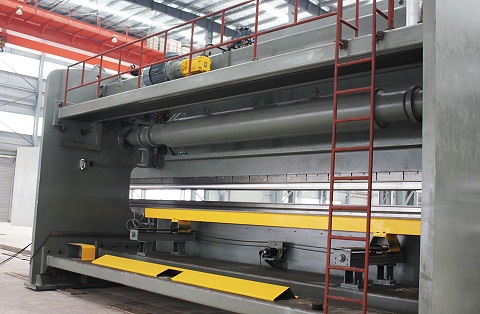When purchasing CNC bending machine, once the selection is improper, the production cost will rise, and the recovery cost of bending machine will be difficult to predict. Therefore, there are several factors that need to be considered in decision-making.
The first thing to consider is the parts you want to produce. The key is to buy a machine that can complete the processing task, and the worktable is the shortest and the tonnage is the least.
To carefully consider the material brand, the maximum processing thickness and length. If most of the workpieces are mild steel with a thickness of 16 gauge and a maximum length of 3 m, the free bending force shall not exceed 50 tons. However, if a large number of bottomed dies are to be formed, perhaps a 160 ton machine tool should be considered.
Assuming the thickest material is 1 / 4 inch, 200 tons are required for 10 foot free bending and at least 600 tons are required for bottom die bending (corrected bending). For most 5-foot or shorter workpieces, the tonnage is almost halved, which can greatly reduce the procurement cost. The length of parts is very important in determining the specifications of a new machine.
When the load is the same, the deflection of the 10 foot machine and skateboard is four times that of the 5 foot machine. In other words, shorter machines need fewer adjusting gaskets to produce qualified parts. Reduce the adjustment pad and shorten the preparation time.

Using the free bending method, the bending radius is 0.156 times of the die opening. The opening distance of the die is 8 times of the thickness of the metal material. Taking 16gauge low carbon steel as an example, the bending radius of the part is 0.078 inch when the opening distance is 1 / 2 inch (0.0127m). If the bending radius is almost less than the material thickness,
It must be formed with bottom die. However, the forming pressure of the die with bottom is about four times that of the free bending.
If the bending radius is less than the material thickness, the punch with the front fillet radius less than the material thickness should be used, and then the bending method should be used. Therefore, it requires 10 times the free bending pressure.
For free bending, the processing temperature of punch and die is 85 ° or less (slightly better). When using this set of die, attention should be paid to the gap between the punch and the die at the bottom of the stroke, as well as the excessive bending of about 90 ° of the material needed to compensate the springback.
In the new bending machine, the springback angle of the free bending die is generally ≤ 2 ° and the bending radius is 0.156 times of the opening distance of the die.
For the bending of the bottom die, the bending angle is generally 86 ~ 90 degrees. The gap between punch and die at the end of stroke should be slightly larger than the material thickness. Because the bending volume of the die with bottom is larger (about 4 times of that of free bending), the springback stress within the bending radius is reduced, so the forming angle can be improved.
The imprint bend is the same as the die bend with bottom, only the required bending radius is machined at the front end of the punch, while the die gap machined at the bottom of the punch is less than the material thickness. Because enough pressure (about 10 times of free bending) is applied to force the front end of the punch to contact the material, rebound can be basically avoided.
When selecting the minimum tonnage specification, it is better to consider the bending radius greater than the material thickness, and use the free bending method as far as possible. When the bending radius is large, the quality and future use of the parts will not be affected.
Even if it's a shelf full mold, don't think it's suitable for a new machine. The wear of each die can be checked by measuring the length from the front end of the punch to the shoulder and the length between the shoulders of the female die.
For common dies, the error per foot should be about ± 0.001 inch, and the length error should not exceed ± 0.005 inch. For the precision grinding die, the precision per foot shall be ± 0.0004 inch, and the total precision shall not exceed ± 0.002 inch.
Assuming that a 5 × 10 foot thick 10 gauge mild steel is bent 90 degrees, the CNC bending machine may need to apply an additional 7.5 tons of pressure to jack up the steel plate, and the operator must be ready to make the steel plate drop 280 pounds vertically. It may take several strong workers, or even a crane, to produce this part. Bending machine operators often need to bend long side parts, and do not know how difficult their work is.

Nanjing Mavo Machine Tool Manufacturing Co., Ltd
Contact person: Danny Wu / Wilson Wang
Mobile phone:+8615722753754 / +8613276628018
Email:Danny@mavomt.com /Wilson@mavomt.com
Address: Dongshan Avenue, Economic development Zone , Jiangning District,Nanjing, Jiangsu Province,China